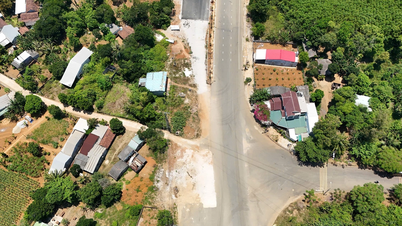ANTD.VN - On July 18, the report "Asia chart of the week - Investment flows still flow" by HSBC Bank stated that the Covid-19 pandemic has not greatly affected foreign direct investment (FDI) flows into Asia and this is still a relatively good investment destination in the current context.
 |
HSBC Bank believes that the Covid-19 pandemic has not had much impact on foreign direct investment (FDI) flows into Asia. |
Despite the noise about lackluster growth prospects and a trend toward localization, foreign direct investment continues to flow into Asia, according to HSBC. Furthermore, much of this investment is focused on manufacturing, reinforcing the region’s position as a global trading hub.
ASEAN has overtaken mainland China for the second year in a row, and India is also gaining ground, especially in terms of new investment rather than reinvestment. In addition, manufacturers from mainland China are also increasing their investment in other economies, especially in ASEAN. Relative to the size of the economies, investment flows are particularly strong in Vietnam, Malaysia, Australia and New Zealand, and less so in South Korea, mainland China and Japan.
According to HSBC, foreign direct investment flows into countries around the world have been declining for some time after peaking in 2015 as part of the trend of “deglobalization” and “geoeconomic fragmentation”. In contrast, FDI flows into Asia have continued to rise, with a notable jump over the past three years.
“The pandemic has had little impact on investment flows to the region. FDI flows to Asia have more than doubled since 2010. However, we need to look more closely. As a destination for FDI, mainland China has traditionally received large inflows. Last year, the economy received record high investment despite falling demand and challenges associated with the “zero Covid” strategy. However, capital flows to ASEAN have surged, with the region receiving more capital than mainland China for two consecutive years, while capital flows to India are also on the rise,” HSBC experts commented.
While mainland China has seen a significant slowdown, new investment into India has surged and is now starting to spill over into ASEAN, where new FDI has also increased. That means new investment is largely directed towards Southeast Asia and India. Companies are not abandoning mainland China either: last year’s record FDI total suggests that established companies are continuing to expand.
But how do FDI flows fit into the bigger picture? The answer is quite important. First, cross-border investment helps to spread technology, increase productivity in the home and destination economies, and promote international trade and connectivity. FDI also contributes directly to GDP in the form of investment expenditure.
In Vietnam, Malaysia, New Zealand, Australia and the Philippines, FDI flows account for more than 2% of GDP. In contrast, in South Korea, Japan, mainland China and Bangladesh, FDI flows account for around 1% of GDP or less. The overall picture does not show a decline, perhaps more accurately a shift, but overall FDI flows remain stable and sustainable. “Asia remains a pretty good place to invest,” HSBC experts said.
Source link



![[Photo] Prime Minister Pham Minh Chinh chairs Government Standing Committee meeting on Gia Binh airport project](https://vphoto.vietnam.vn/thumb/1200x675/vietnam/resource/IMAGE/2025/5/10/6d3bef55258d417b9bca53fbefd4aeee)
































































































Comment (0)